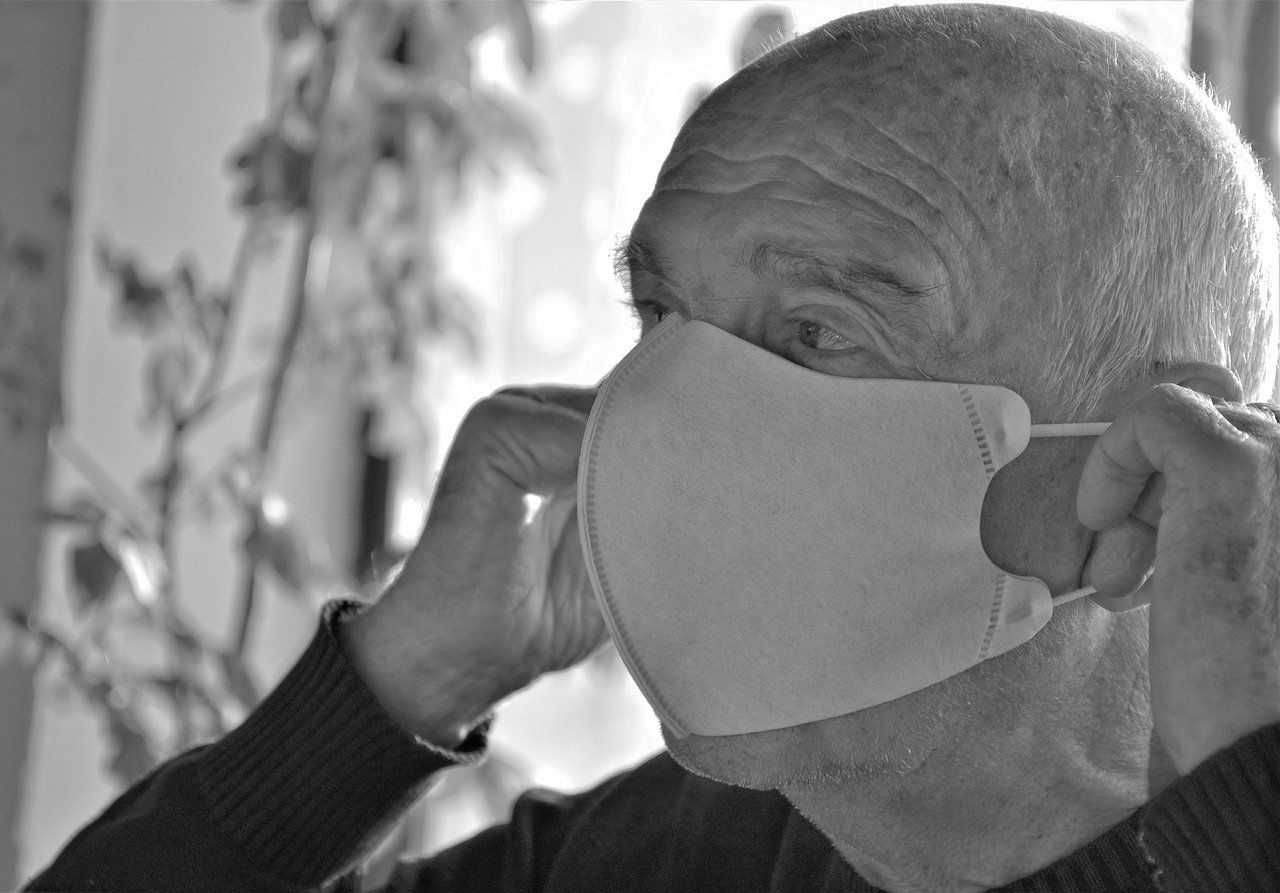In French nursing homes, the Covid-19 crisis has revealed the detrimental effects of austerity policies
This article was originally published (in French) in the Conversation.
By Laura Nirello, IMT Lille Douai, and Ilona Delouette, University of Lille.
[divider style=”normal” top=”20″ bottom=”20″]
[dropcap]W[/dropcap]ith apocalyptic accounts of conditions in French nursing homes, where deaths have soared (over 9,000 estimated as of 3 May 2020), the Covid-19 pandemic has revealed, more than ever, the hardships facing this sector.
For years, care providers who work in France’s nursing homes (known as EHPADs in French) have been sounding the alarm about the crisis facing such facilities, underscoring the pitfalls of austerity policies and budgeting when applied to healthcare and care for dependent persons.
The ‘EHPAD’ nursing home status was created in 1997 when, after twenty years of discussions, the government approved the idea of covering care for dependent persons through the national Social Security program. At the time, the decision was based on a number of technical aspects, and in particular, uncertainty with respect to how the cost of providing care for dependent persons would develop in the future, and therefore, how it would be budgeted over time.
In 1997, a welfare allowance, managed by the departments, was therefore put in place (PSD, (assistance allowance), which has since been replaced with the APA (personal care allowance)).
Impossible to separate ‘cure’ from ‘care’?
This theoretical separation between healthcare, funded by Social Security, and care for dependent persons, funded by the departments, is at odds with the reality of care situations. Indeed, how can that which pertains to health (cure) be separated from that which pertains to assisting dependent persons (care)?
It is even more difficult to separate the two aspects in the case of highly dependent persons who require medical care in an institutional setting. The ‘EHPAD’ nursing home status was created precisely to cope with the influx of highly dependent persons: it makes facilities eligible for funding from both the public health insurance program and the departments.
Funding for nursing homes is therefore based on a three-part pricing system according to a theoretical categorization of costs (medical care, dependent care, living expenses). This funding is provided by public authorities, all of whom have limited budgets.
Living expenses are paid for by residents and their families. ‘Medical care’ is 100% funded through public health insurance, through the Regional Health Agency (ARS) while ‘dependent care’ is primarily funded by Departmental Councils. The Regional Health Agencies are limited to the fixed budgets voted upon annually through the Social Security Financing Act, while the Departmental Councils are limited to the funds transferred from the State through the personal care allowance (APA).
Medical care for the lowest possible cost
As part of the austerity policies imposed on the hospital sector, healthcare regulators gradually sought to remove expenditure for dependent elderly persons from hospital accounts. As such, according to IGAS, over a ten-year period (2006-2016) more than half of the beds in long-term care units (USLD) filled by highly dependent persons whose condition requires constant medical supervision were converted to places in nursing homes. Elderly people suffering from a loss of independence had no choice but to follow this trend and were sent to nursing homes. The State also invested in home care services and independent living facilities for the most independent individuals. This made it possible to limit the number of new places created in nursing homes.
The funding for nursing homes is negotiated through multi-year performance and resource contracts (CPOM) that determine an average level of dependency and severity of medical conditions for residents for a five-year period: the institutions are responsible for remaining within these averages and controlling resident admissions and discharges based on their level of dependency.
In this way, the authorities who fund the nursing homes pushed them to specialize in highly-dependent residents by taking in individuals excluded from the hospital setting and no longer independent enough to live at home or at intermediate living facilities. Nursing homes also tend to provide care for a community with an increasing number of medical conditions: more than a third of residents suffer from Alzheimer’s disease and struggle to perform everyday tasks (90% of residents need help with bathing and grooming); residents are admitted at an increasingly advanced age (85 years and 8 months) and stays in nursing homes are shorter (2 years and 5 months), according to data from the DREES (Directorate for Research, Studies, Evaluation and Statistics, a directorate of the central administration of health and social ministries).
But nursing homes’ resources have not kept pace with this changing profile of the residents receiving care. According to the DREES, while nursing homes now provide care for residents whose needs closely resemble those in long-term care units (USLD), the caregiver to patient ratio is .62 full-time equivalent employees per resident compared to 1.1 full-time equivalent employee per patient in long-term care units.
Moreover, while the staff of long-term care units are primarily made up of nurses, geriatric medicine specialists and nursing aids, in nursing homes there is only a single coordinating physician. And this physician is only present on a part-time basis, since they work at several facilities. Likewise, there are few nurses (5.8 for 100 residents) and they are not on site at night, whereas nurses are present 24 hours a day in long-term care units. Nursing home staff are primarily made up of nursing assistants and auxiliary staff, who are undoubtedly extremely devoted to their work, but are not adequately trained for the tasks they carry out and certainly underpaid as a result.
Deteriorating work and care conditions
Nursing homes find themselves facing a chronic lack of public funding. It therefore comes as no surprise that faced with emergency situations and endless needs, employees inevitably perform tasks that extend beyond their job description: they have no choice but to carry out tasks that are essential, but for which they are not qualified, to provide residents with the care and assistance they need (auxiliary staff help with grooming while nursing aids provide medical care). There is a disconnect between the work performed and salary levels, which remain low, making the sector unappealing and as a result, most nursing homes struggle to recruit staff, therefore exacerbating the already low caregiver-to-resident ratio in these facilities.
Working conditions have become even more difficult as changes in managerial practices have changed, as a result of efforts to control public spending, and have led to a demand for cost-effectiveness in nursing homes. These changes run counter to the founding principles of the facilities. As a successor to retirement homes, these institutions are also living communities, with a great number of interpersonal needs relating to accommodation (laundry, dining services), individual relationships and social life (care).
But in an effort to streamline operations, which goes hand in hand with cutting costs, work is “industrialized,” tasks are standardized and must be completed at a faster pace. The goal is to cut back on time considered to be “unproductive” – meaning saying “Good morning” and, “How are you today?” to residents in the morning and talking with them calmly in the evening – which ultimately amounts to all interpersonal aspects.
As far as indicators for funding institutions are concerned, public authorities prioritize tasks meant to accurately reflect operational productivity: the number of patients assisted with bathing and grooming or number of meals served! This intensifies the trend toward the dehumanization of living conditions in nursing homes, which are gradually turning in to “places to die.”
Dependence, a challenge for Social Security to recover from the crisis
This situation is alarming under normal circumstances, in particular from an ethical and social justice perspective, but it becomes tragic in the event of a health crisis. This is especially true today during the Covid-19 crisis. As the virus is wreaking havoc in these institutions, nursing homes lack medical staff to prescribe and administer the medications needed to keep patients alive and maintain their cognitive functions, or provide end-of-life care (Midazolam, Perfalgan). Staff members who are not considered caregivers had to wait for public authorities to decide to provide them with protective equipment, although it is critical to protecting high-risk residents. And while these residents are isolated in their rooms and visits are prohibited, employees do not have the time to comfort and support them at this difficult time.
These tragic circumstances call for a drastic rethinking of the nursing home model as many reports have suggested (Mission Flash Iborra-Fiat in 2018, Libault report in 2019). The fact is that these issues are related to the way the sector is funded.
While the various studies have assessed funding requirements for nursing homes at €7 and 10 billion, establishing a way to cover care for dependent persons within the healthcare sector, accompanied by increased resources based on needs, would have the advantage of doing away with the impossible separation between ‘cure’ and ‘care’, which has been maintained up to now for budgetary reasons, but which has shown its limitations, both in terms of managing hospitals and caring for dependent persons.
[divider style=”dotted” top=”20″ bottom=”20″]
Laura Nirello, Assistant Professor in economics, IMT Lille Douai – Institut Mines-Télécom and Ilona Delouette, PhD student in economics, University of Lille
This article has been republished from The Conversation under a Creative Commons license. Read original article (in French).





Leave a Reply
Want to join the discussion?Feel free to contribute!